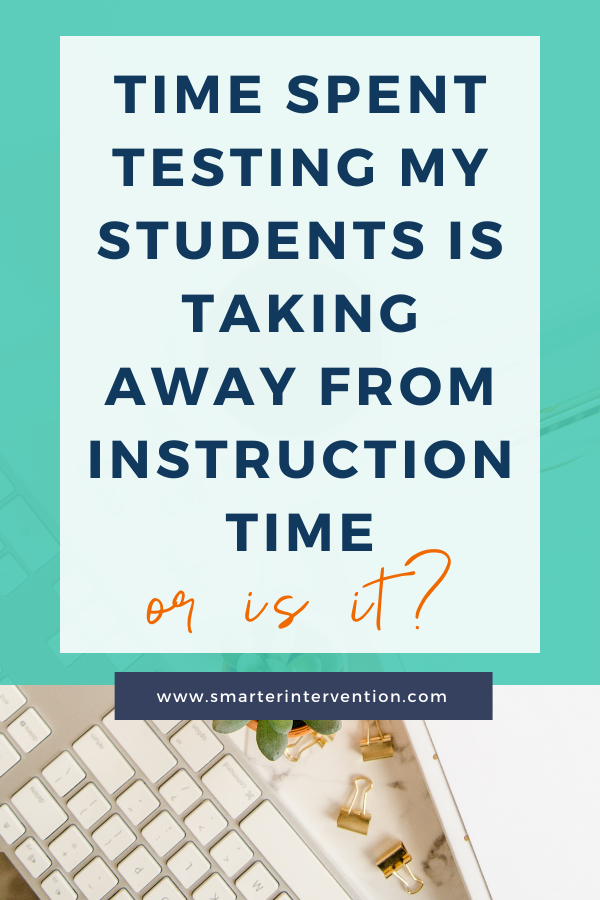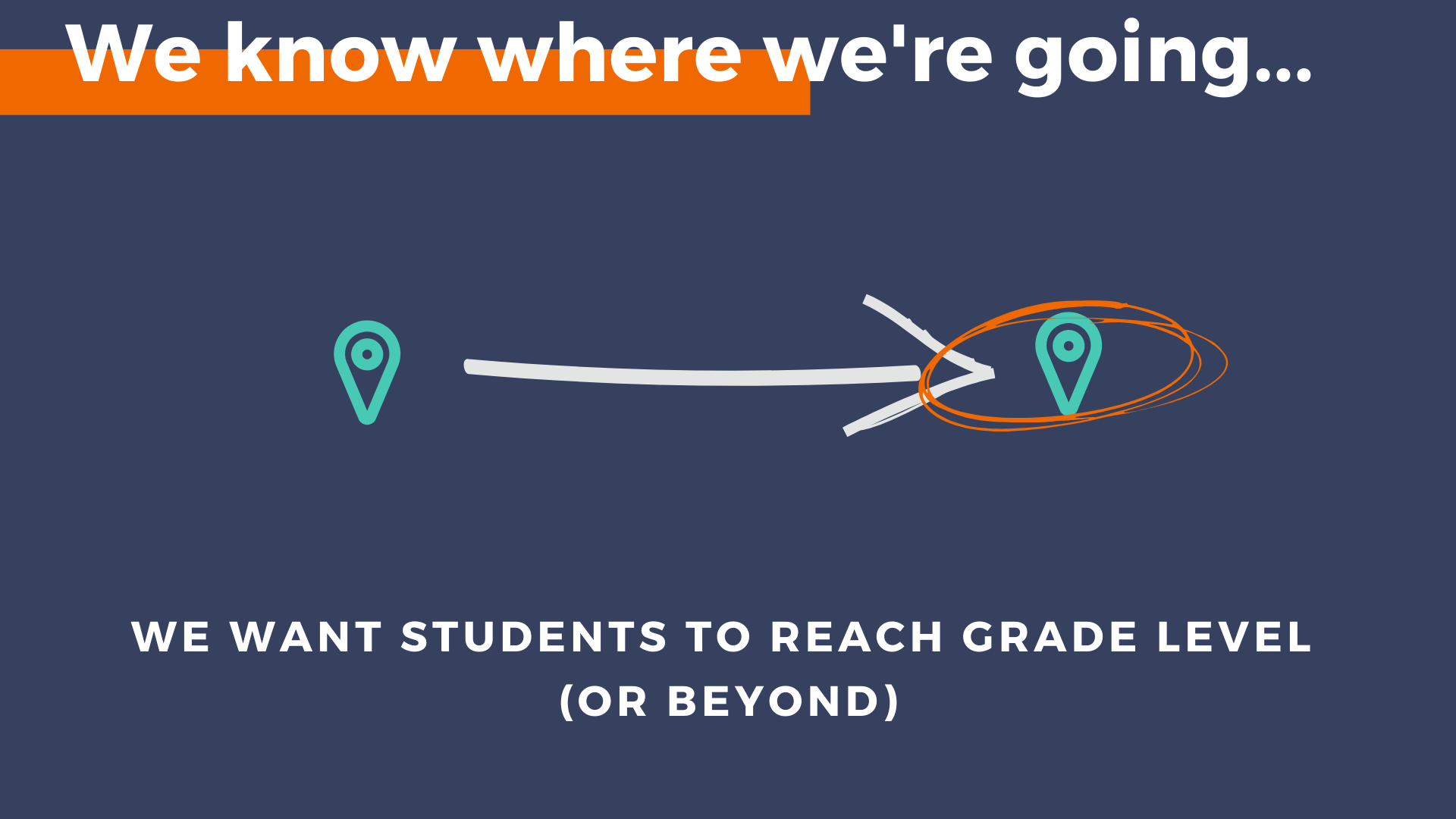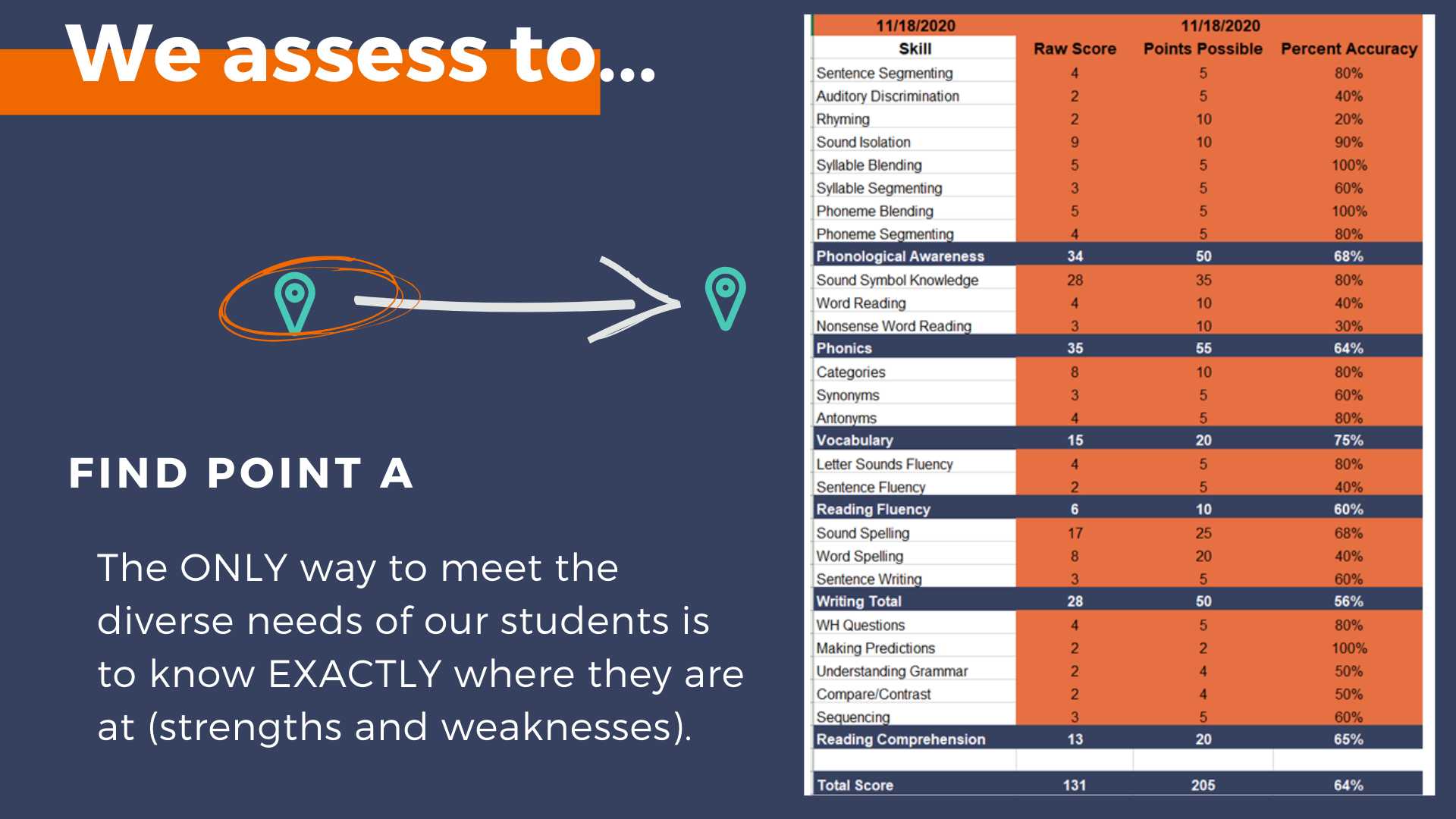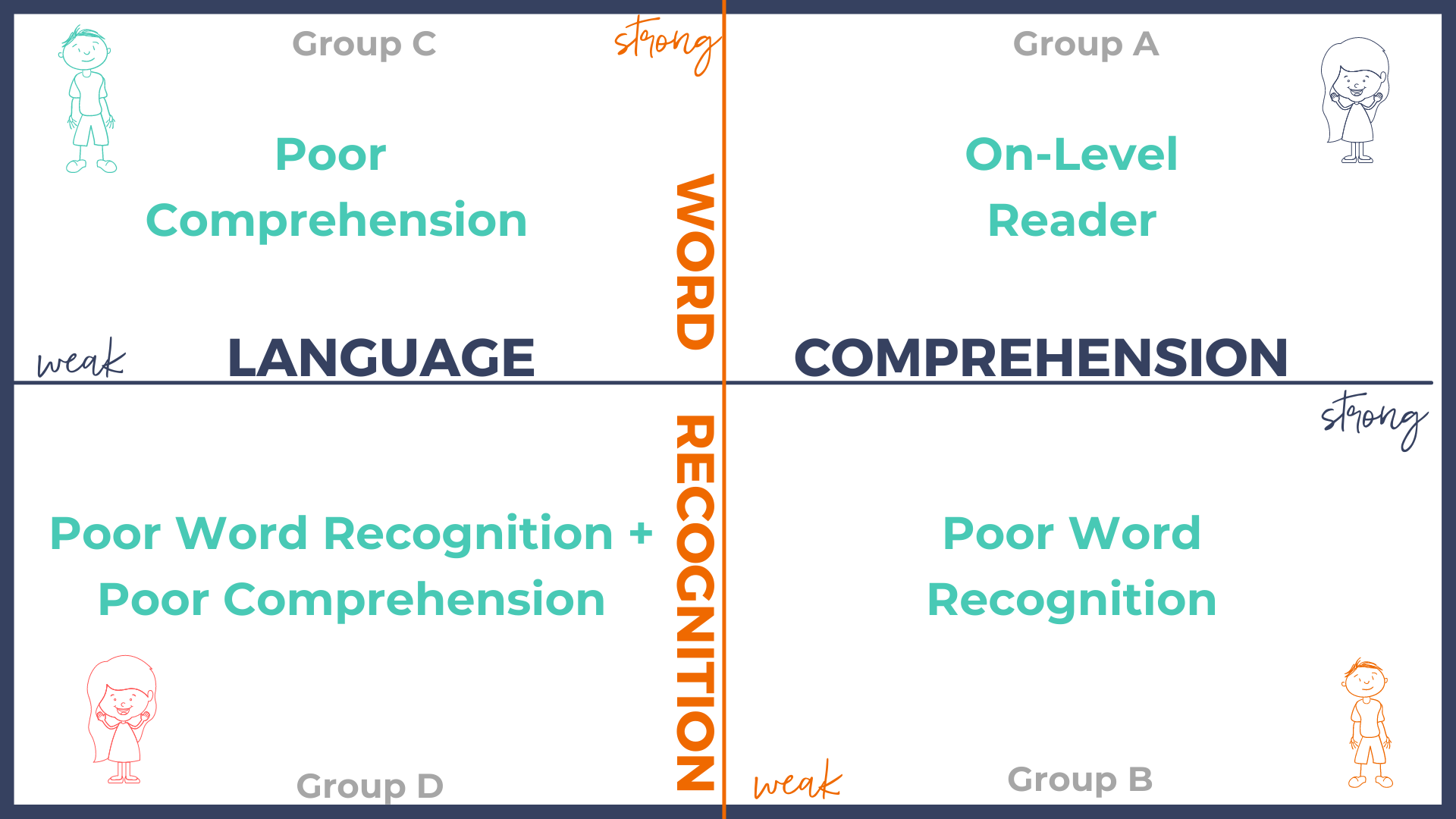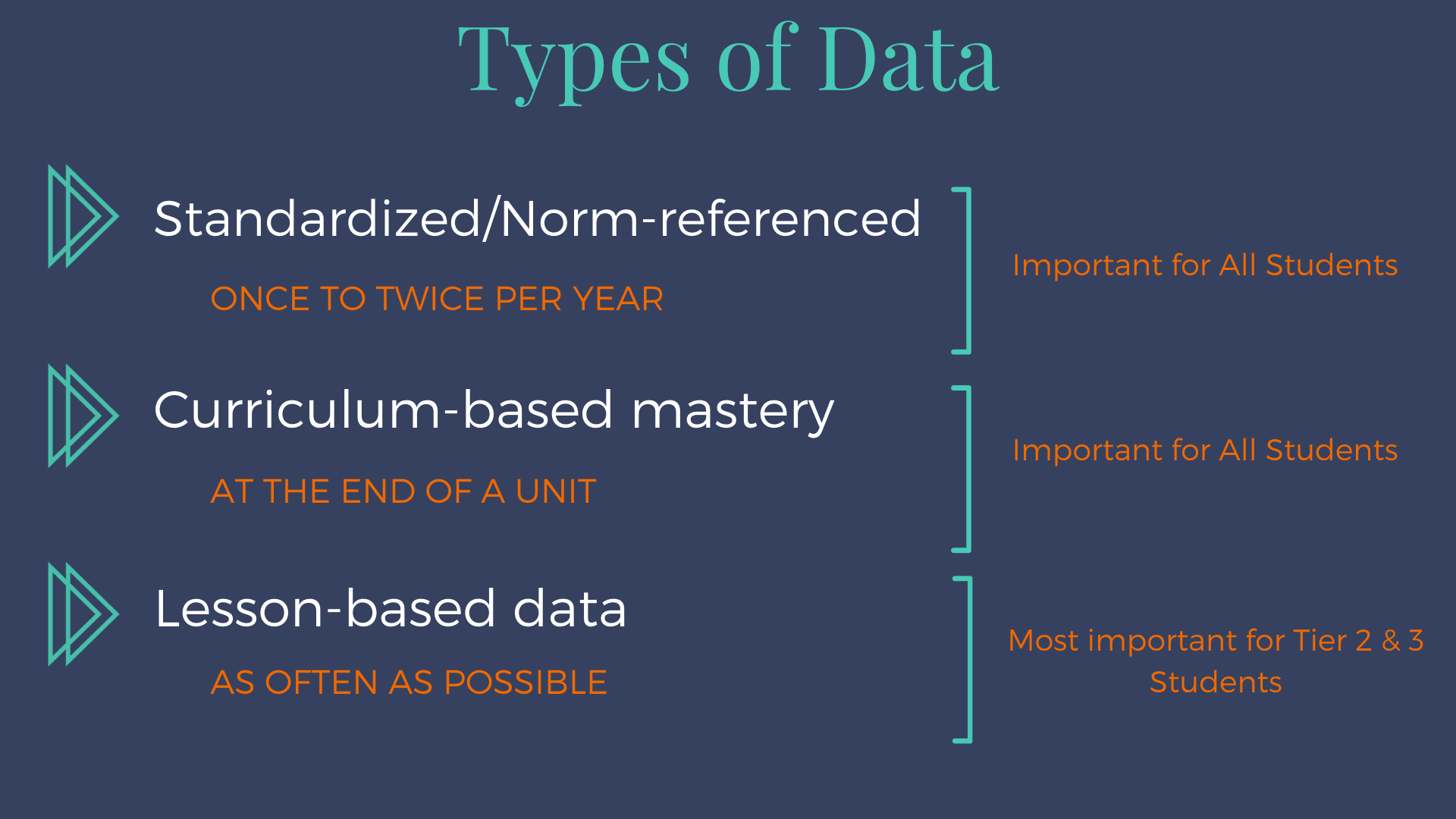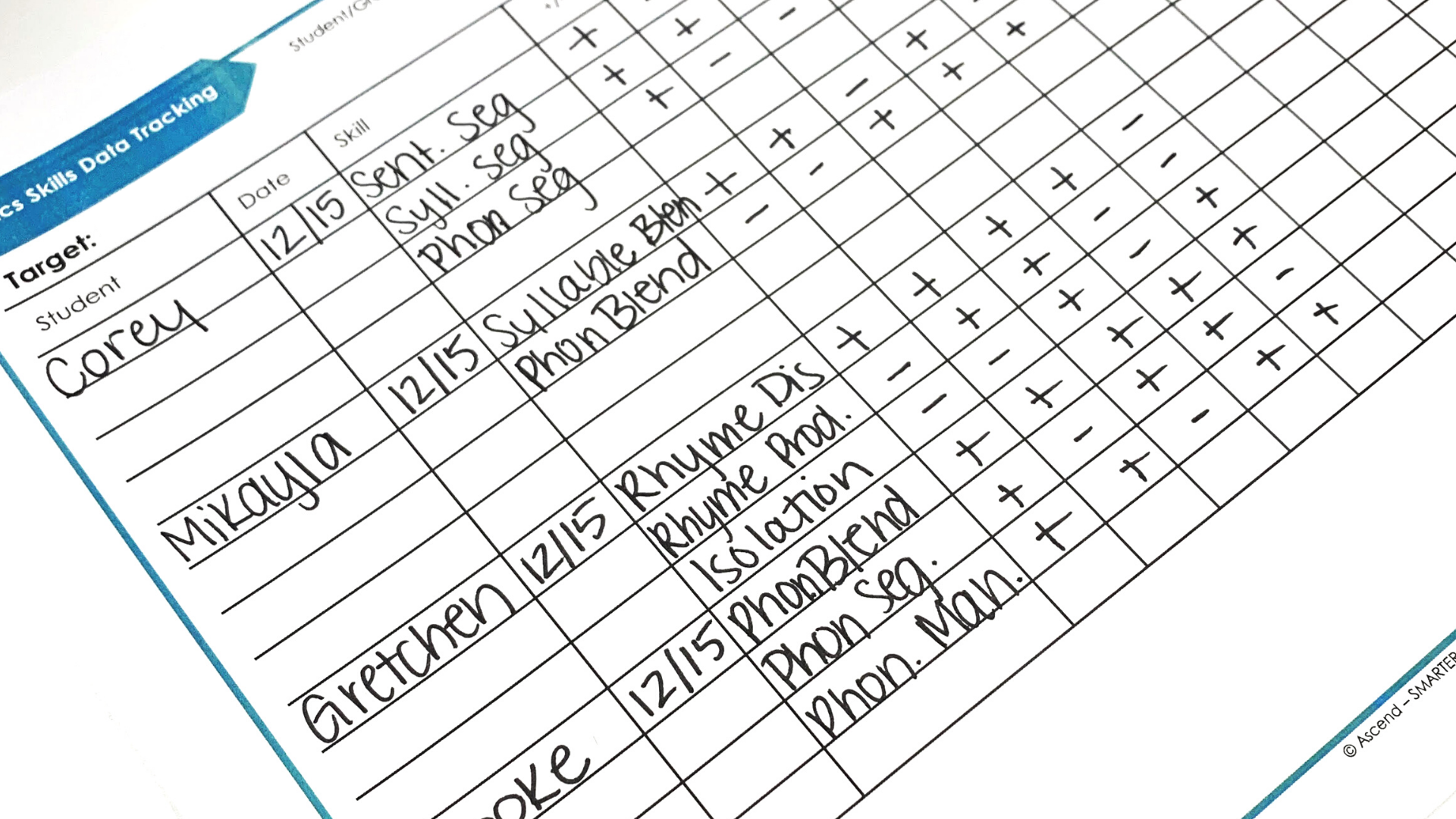Time Spent Testing My Students is Taking Away From Instruction Time (or is it?)
Maybe you can relate -
As educators & SLPs we spend a lot of time testing our students!
It can absolutely feel like all the time we spend evaluating could be better spent actually TEACHING our students the skills, right?
But the truth is - it is a critical component of our instruction.
While we are just as eager to jump into concepts with our students and get them the instruction we KNOW they will need, we have to recognize that assessments and data should be providing us with incredibly valuable information that sets the trajectory for where we need to go.
Because here’s the thing,
For those of us working with struggling readers, we know where we’re headed.
We’re headed towards grade-level reading ability.
But the problem is that without assessment data, we don’t actually know where we’re starting.
Because, as we discussed before, not all students struggle to read for the same reason.
From a cognitive perspective, students usually struggle with either:
Decoding (sounding out the words)
because of a breakdown in phonology (understanding the sound structure of the language) or a breakdown in orthography (understanding the visual structure of the language)
OR they struggle
Comprehending (understanding the meaning of the words, sentences, and passages)
because of a breakdown in language processing or semantic understanding.
And it’s incredibly important to KNOW where students are in order to provide the right type of instruction.
Now, we absolutely get it!
If we are assessing students and aren’t getting useful data on where Point A (that starting point) is for students, then that’s a problem!
Assessment data should give us valuable information on where our students are.
It should also give us key information on what type of instruction they need.
So thinking about reading assessment specifically, we need assessment data to tell us whether students are struggling with decoding, comprehension, or both.
By knowing this information we can start to place students into instructional groups.
If they aren’t struggling with decoding or comprehension they would be considered an “on-level” reader labeled here as Group A.
If they are struggling with decoding (sounding words out) but not with language comprehension, they will need explicit and systematic phonics instruction to comprehend effectively, this group is labeled here as Group B.
If students are struggling with language comprehension (understanding the meaning of words, sentences, and passages read aloud), but are able to sound words out effectively, they will need explicit comprehension instruction, this group is labeled here as Group C.
If students struggle with both language comprehension and sounding out words, they will need explicit instruction in systematic and structured phonics in addition to explicit comprehension instruction to reach their reading target.
What this means is that ideally, we would be segmenting students into two separate reading intervention groups.
A decoding strategies group where students receive additional support with systematic phonics and a comprehension strategies group where students receive additional support with language comprehension. Some students would benefit from placement into both groups.
But in order to do this effectively, we need to use assessment data!
So what exactly does this look like?
We assess (collect data) in three ways. For students that we work with we use a combination of standardized/norm-referenced data that we collect once to twice per year. We also use curriculum-based assessments to monitor mastery of the material we’ve explicitly taught. Finally, we use lesson-based data to get an idea of how students are performing over time. Now, obviously depending on your setting you may not be able to collect all of this information quite as frequently. This is totally fine, but it is important that you have a data collection plan.
Standardized or norm-referenced assessments…
…are helpful to compare students to grade-level norms to determine how they are performing compared to peers and grade-level standards. This type of testing helps to provide a benchmark on whether students are “on-level” for their grades or not.
If you’re looking at collecting this type of data for a full classroom you might use tools like Aimsweb, I-Ready, STAR, Measures of Academic Progress (MAP), etc. Now all of these tools have their pros and cons but many can provide generally helpful information on knowing whether students are “on-level” or not.
If you are able to provide individualized assessment, some of our favorite standardized measures include the Wechsler Individualized Achievement Test (WIAT-4), the Test of Word Reading Efficiency (TOWRE-2), the Gray Oral Reading Test (GORT-5), the Test of Integrated Language & Literacy Skills (TILLS), the Comprehensive Test of Phonological Processing (CTOPP-2), and the Word Identification & Spelling Test (WIST).
Curriculum-Based Assessments…
…are helpful in determining whether students are progressing through the content they’re learning. Essentially, this data should help us understand if they’ve mastered the concepts they’ve previously been taught which helps us to understand if students are “responding” to instruction.
Some of the full-class standardized assessments listed above can also help to determine if students are making progress, especially if you’re using the aligned instructional tools. Ideally, your curriculum-based assessments should be tied to the instructional tool you’re using. You want to measure the same skills across time periods to determine if students are increasing their abilities.
Lesson-Based Data
Is helpful in providing patterns of data over time. This type of data lets you see more than just a snapshot in time. You can look at lesson-based data in many ways. We typically break this data down into binary data (yes/no), rubrics, or observational data. Ideally, as often as possible you want to use BINARY data (was the student able to answer correctly or not) because it is much less subjective than other forms of data. This data is often known as “formative” data which means you’re using the data to help form your ongoing lessons.
In order to collect lesson-based data, we simply track whether students answered correctly when provided questions in our intervention (small-group) instruction.
So for example, Mikayla was asked to blend syllables together to create words, and on the first two questions she answered correctly, then she missed the next opportunity and then got the final opportunity correct. We aren’t creating assessments, we’re quite simply just tracking whether she answered the question we provided during the instruction correctly or incorrectly.
The type and amount of assessment/data-tracking you do absolutely depends on your setting.
But regardless of your setting, knowing where students are so that we can determine that Point A and make sure they’re on track is absolutely critical! Through assessment, we can more effectively target instruction and it actually SAVES time in the instructional process because you’re able to choose the RIGHT activities based on what students need.
Stay tuned because next month we will be talking about instructional activities and materials WE LOVE that help us to target instruction once we have that necessary assessment data.
In the meantime, we wanted to share our How to Create SOR-Aligned Goals & Track Data. In this free workshop, you will learn how to use the data you already have to set appropriate goals, uncover the key to setting up your lessons to make data tracking easy and learn how to manage & organize your data. Plus, you’ll get a free data-tracking template!

